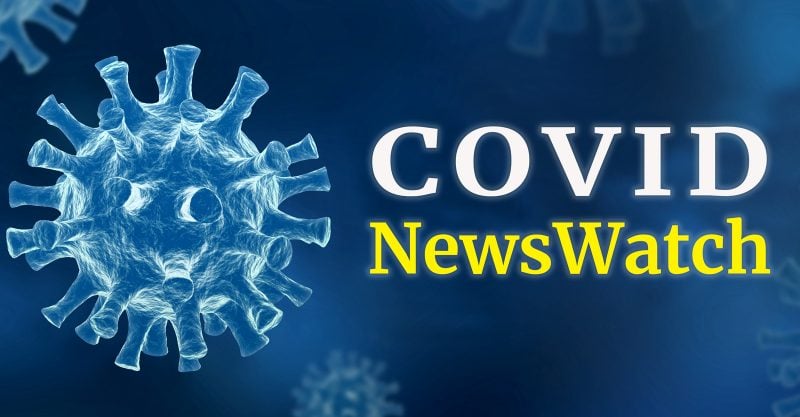Miss a day, miss a lot. Subscribe to The Defender's Top News of the Day. It's free.
Program Created to Help Those Hurt by Pandemic Treatments — but Not Many Want to Talk About It
It seems very few people want to talk about the Countermeasures Injury Compensation Program or CICP. It’s a federal program to compensate people hurt by a medicine or medical device used to fight a pandemic.
For Allen Storey, and for more than half of the people who have filed claims with the CICP, that countermeasure is the COVID-19 vaccine. “I was glad to get it,” recalled Allen Storey about the vaccine. But then came an acute brain stem stroke and a series of confusing medical diagnoses that left them financially and emotionally dazed and confused.
Days after Allen received his first vaccine dose, doctors thought he was experiencing vertigo. His condition grew worse. He became non-responsive. His only way to communicate was by squeezing his wife Beverly’s hand.
But instead of helping, the CICP became one more challenge. Nearly two years later, Beverly still hadn’t heard from anyone at the CICP. “You don’t get any answers. Nobody calls back, nobody has sent anything in the mail,” Beverly told 11Alive exasperated.
Wisconsin Supreme Court to Rule on Court-Ordered Ivermectin for COVID
Milwaukee Journal Sentinel reported:
The Wisconsin Supreme Court is deciding whether a hospital should have been forced to give a patient ivermectin to treat COVID-19, a ruling that will have implications on how far the court can intervene in the decisions of healthcare providers.
The Supreme Court heard oral arguments in the case of Gahl v. Aurora Health on Tuesday.
When Allen Gahl’s uncle, John Zingsheim, was put on a ventilator in October 2021 due to complications from COVID-19, he got a prescription for ivermectin from a doctor not associated with Aurora Medical Center Summit, where his uncle was hospitalized. When doctors at Aurora refused to provide and administer the drug, Gahl sued.
Anti-COVID Device Comes Too Late for Airlines as Flyers Shrug off Pandemic
A COVID-era invention that protects plane passengers from the virus with a curtain of fast-flowing air is proving redundant, underscoring how little travelers care about the risk of infection in the rush back to the skies.
Washington-based Pexco Aerospace Inc. has spent the pandemic designing and manufacturing a device that clips onto air vents inside the aircraft. The gadget — called Airshield — forces air down to the cabin floor at twice the normal speed and creates an invisible barrier between each passenger. The risk of cross-contamination from a nearby cough or sneeze, Pexco says, is reduced by more than 70%.
The company’s enterprising add-on might have made commercial sense for airlines in the early days of the crisis when many carriers blocked out middle seats to create an expensive buffer against COVID. But almost three years on, Airshield has instead come to highlight the staggering pace of aviation’s recovery from a state of near-collapse.
It would cost an airline about $60,000 to fit out a single-aisle plane with the device, Page said. He argues that Airshield can still improve the flight experience for the crew, as well as passengers in economy. The product must pass just one more test by the U.S. Federal Aviation Administration to win certification, he said.
Davos 2023: Moderna CEO in Talks With China to Supply COVID Vaccines
Moderna (MRNA.O) chief executive Stephane Bancel said on Wednesday the U.S. company was in active discussions to supply COVID-19 vaccines to China.
Speaking to Reuters on the sidelines of the World Economic Forum annual meeting in Davos, he said the talks with Beijing also covered the topic of factories and other products including cancer treatments.
China-made COVID vaccines are of the inactivated virus type and not based on the messenger RNA technology used in the most widely used shots developed by Moderna and Pfizer (PFE.N)-BioNTech (22UAy.DE).
Earlier, in a WEF panel discussion, Bancel said he would like to have factories making vaccines based on its messenger RNA technology on every continent as the U.S. company prepares to build four facilities. The company, whose COVID-19 vaccines are made in the United States and Switzerland, is building or planning to build plants in Canada, Australia, Britain and Kenya, he said.
The Dangers of ‘Long COVID Learning Loss’ and How to Fix It
As we continue to navigate a once-in-a-century pandemic, attention is shifting to the long-term health impacts of COVID-19 — what health professionals call “long COVID.” But as recent devastating student test score results made clear, we’re missing a similar phenomenon playing out in classrooms across the country. School closures may be behind us, but our nation’s students are at risk of struggling for years with lasting after-effects of the pandemic — what some of our fellow education researchers have termed “long COVID learning loss.”
This has the potential to be much worse than a temporary, one-time setback. Our school system focuses classroom instruction on grade-level content, often with 25 or 30 students per class. There is very little opportunity for individualization, meaning that when a student starts falling behind, they often stay behind.
We can see this in data from the Chicago Public Schools (CPS). Students who fall behind their peers tend to stay behind. This is long COVID learning loss in action. Millions of students are condemned to a host of consequences they’ll carry with them into adulthood.
Thankfully, unlike the ongoing health puzzle of long COVID, we do know how to address learning loss. It is possible to rapidly accelerate student learning by borrowing an idea that dates to at least the 15th century at Oxford University: tutoring.
Pandemic Deadline Threatens Access to Adderall, Hormone Therapies
The anticipated end of the COVID public health emergency will bring a massive change in how patients receive prescriptions for drugs like Adderall, Xanax and hormone therapies, by requiring them to see a doctor in person.
Why it matters: The pandemic-fueled explosion in telehealth — and policies to enable it — removed such requirements, and providers warn that an abrupt return to the old way of dispensing controlled substances with medical uses could be hugely disruptive.
The big picture: Congress has extended many telehealth waivers beyond the end of the public health emergency, which is expected to expire in a few months. But there are special rules governing the prescribing of controlled substances that are set to immediately snap back into place once the public health emergency ends.
How Are COVID Symptoms Changing?
In the short space of a few years, we’ve seen surprising changes in the way COVID-19 presents. At the start of the pandemic the first commonly reported symptoms were loss of smell and taste, followed by shortness of breath and a cough, followed by vascular injuries, says David Strain, a senior clinical lecturer at the University of Exeter Medical School. “That became the standard that we expected,” he says.
Since then there’s been an evolution of symptom clusters and manifestations across the variants, says Betty Raman, senior clinical research fellow in the Radcliffe Department of Medicine, University of Oxford, affected by the evolution of the virus itself but also by vaccines, the vaccine landscape, the use of other treatments and people getting recurrent infections. This has led to falling hospital admissions and changes in the frequency of each symptom.
Strain says that the loss of sense of smell and taste is nowhere near as prevalent as it used to be. “That really happened at the time of Omicron,” he says. “Omicron subvariants BA.1 and BA.2 seemed to migrate from [infecting mainly] lungs and nervous tissue to the upper airways. BA.1 for many people was little more than a severe head cold.”
Raman adds that, while some people still experience brain fog, on a population scale this seems slightly less prevalent with newer variants and vaccines.
Pandemic Years Saw a Reduction in Medical Debt
Medical debt may still plague millions of American families, but the pandemic years brought a marked decline in the number of people struggling to cover their health costs, the Centers for Disease Control and Prevention reported today.
Between the lines: Researchers said the CARES Act, American Rescue Plan Act and other pandemic relief legislation may have indirectly softened the blow of medical debt by providing direct monetary payments, increasing the percentage of people covered by insurance using COBRA premium subsidies and expanding eligibility for subsidies in Affordable Care Act markets, among other things.




